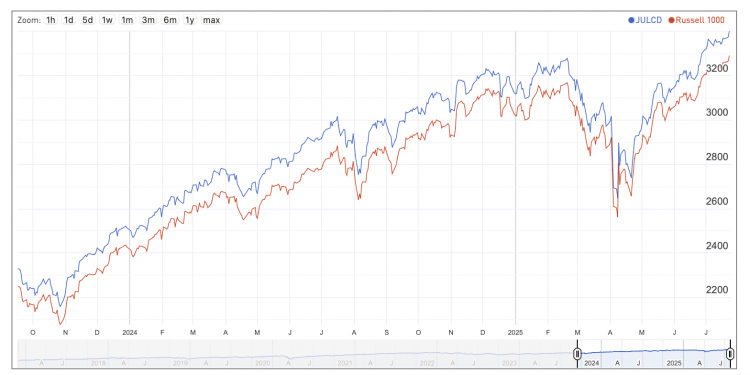3 Ways Corporations Are Stepping Up on Climate
This past Monday, the Trump administration formally notified the United Nations that it would withdraw the United States from the Paris Agreement on climate change, marking another move in the administration’s continuous efforts to reverse or roll back environmental rules and regulations. According to research from Harvard Law School, Columbia Law School, and others, 78 environmental rules are on the way out under the Trump administration, with 47 completed thus far.
What’s the good news amidst the chaos? Even with the absence of federal leadership on climate change and key environmental issues, many in corporate America are stepping up to drive change. And based on five years of our polling data, this is exactly what the American public wants from companies today. Americans see the environment as a key stakeholder, and agree that corporations play a role in protecting the planet – by minimizing pollution, reducing waste, and implementing robust environmental management systems.
Here are three encouraging ways we’ve seen the companies we track, analyze, and rank step up in the last year to take more responsibility for mitigating climate change.
- More Coal Plants Are Retiring
The Presidential Executive Order on Promoting Energy Independence and Economic Growth issued in March 2017 had the goal to promote coal use and keep coal mining jobs in states like West Virginia and Kentucky. Following this executive order, in 2018, the Acting Administrator of EPA announced a proposal that would repeal Obama-era regulations aimed at reducing carbon dioxide emissions from coal-fired power plants.
How did corporations respond? In 2018 plant owners retired more than 13 gigawatts of coal-fired energy, which is the second-highest annual total for U.S. coal retirements in the past 10 years, and another 17 gigawatts of coal-fired capacity is in the pipeline to be retired by 2025.
- Electrical Power Companies are Reducing Emissions
Electrical power companies have also started making big commitments. Among the 12 biggest electric power companies that we track and analyze, Duke Energy and Southern Company have proposed an ambitious long-term emission reduction goal – zero carbon emissions by 2050. According to a recent company filing, up to 20% of Southern Company’s CEO pay could be tied to climate change for 2019, which adds to the credibility of their commitment. The trend of connecting executive pay to environmental, social, or governance goals is one we’re tracking closely and one we hope to see more of in years to come.
Looking at the 2030 horizon, however, Xcel Energy and AES Corporation have the most ambitious emission reduction goals. Xcel Energy proposed to cut 80% of its emission by 2030 from its 2005 level, and AES Corporation proposed to lower its emission intensity by 70% from its 2016 level by 2030. That’s nearly 31 million metric tons of emission reduction.
Collectively these 12 companies account for 608.5 million metric tons of CO2 in 2018, which is about one-tenth of all energy–related carbon emissions in the United States. Major reduction achievements from these companies are not trivial to our country’s overall efforts to mitigate the climate crisis. They are paramount.
- Cars Are Becoming More Fuel Efficient
Just this past summer, Ford, Volkswagen, Honda, and BMW reached a voluntary deal with California to set tougher emissions and fuel economy rules for themselves, amid the Trump administration’s effort to relax fuel economy rules for cars and light trucks. Collectively, cars and trucks account for nearly 20% of all U.S. emissions. And 14 states and the District of Columbia follow California’s standards for vehicles, so the benchmarks set in California ripple through the rest of the country and can even shape the global market.
Ford, one of our JUST 100 leaders, publicly supports the Paris Climate Accord through improving fuel efficiency and lowering the lifetime emissions associated with vehicle use, and committed to using 100% renewable energy for all manufacturing plants globally by 2035.
Strength in Numbers
One of the more encouraging movements we’ve seen of late is the creation of coalitions like We Are Still In, a group of over 3,800 American businesses, states, cities, and other entities that have joined together to reduce greenhouse gas emissions to meet the goals of the Paris Agreement.
In a New York Times Op-Ed this week, Kathleen McLaughlin of Walmart and Andrew Steer of the World Resources Institute explained that, “Together, these entities represent nearly 70% of the country’s gross domestic product and two-thirds of its population. If this group were a country, it would be the world’s second-largest economy — behind the United States but ahead of China.”
Further they write, “A decade ago, many people viewed climate action and economic growth as being in conflict. Now it’s clear that long-term growth and climate action are inextricably linked. For example, a report by the Global Commission on the Economy and Climate found that bold action on protecting the climate could generate over $26 trillion in benefits through 2030.”
We couldn’t agree more. The U.S. private sector is 4x the size of government and 40x the size of private philanthropy, so if we are going to mitigate the climate crisis, we need more corporate leaders like this to continue to step up and lead the change.
Want to read more stories like this?
Our FREE weekly newsletter about the future of capitalism and the movement to build a more equitable marketplace in America.






